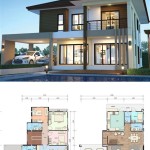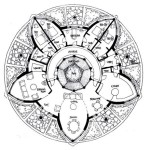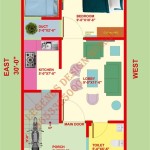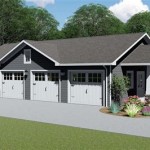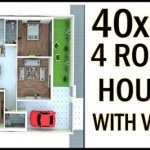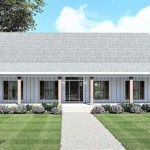The Essential Aspects of House Plan Layout
The layout of a house plan is a crucial element that determines the functionality, comfort, and overall appeal of a home. When designing a house plan, architects and homebuyers need to consider a range of factors to create a layout that meets their specific needs and preferences.
1. Functionality and Flow
The layout should be designed to promote efficient movement throughout the house. Rooms should be arranged in a logical sequence, with adequate space for furniture placement and comfortable circulation. The kitchen, dining area, and living room should be conveniently located to facilitate daily activities and social interactions.
2. Space Planning
The layout should allocate space wisely, maximizing usable areas while minimizing wasted space. Each room should have sufficient square footage to accommodate its intended purpose, considering furniture arrangement and storage needs. Proper proportions and ceiling heights contribute to a sense of spaciousness and comfort.
3. Natural Light
Natural light is essential for creating a healthy and inviting living environment. The layout should incorporate windows and doors strategically to maximize natural light exposure in living spaces. Skylights or solar tubes can also be used to bring light into interior areas.
4. Privacy and Quiet
The layout should provide appropriate levels of privacy for different areas of the house. Bedrooms and bathrooms should be separated from noisy areas, such as the kitchen or living room. The use of hallways, buffers, and soundproofing materials can help reduce noise transmission.
5. Outdoor Space
The layout should consider the integration of outdoor spaces, such as patios, decks, or gardens. Outdoor areas extend the living space and provide opportunities for relaxation, entertainment, and recreation. The layout should ensure seamless transitions between indoor and outdoor spaces.
6. Traffic Patterns
The layout should anticipate and guide traffic patterns within the house. Entrances, hallways, and staircases should be designed to accommodate the expected flow of people and prevent congestion. Wide hallways and open areas can improve accessibility and circulation.
7. Architectural Style
The layout should complement the architectural style of the house. Traditional homes may feature symmetrical plans with formal room arrangements, while modern homes tend to favor open floor plans and asymmetric layouts. The layout should reflect the desired character and aesthetics of the house.
8. Universal Design
Incorporating principles of universal design into the layout can make the house more accessible and adaptable for people of all ages and abilities. This includes features such as wider doorways, ramps, accessible bathrooms, and ground-floor bedrooms.
9. Energy Efficiency
The layout can contribute to energy efficiency in several ways. Passive solar design principles can be used to optimize natural heating and cooling. The placement of windows and doors can facilitate cross-ventilation and reduce the need for artificial lighting.
10. Future Flexibility
The layout should consider potential future needs and changes in lifestyle. Flexible spaces that can be easily adapted to different uses can increase the longevity of the house. The layout should also allow for future additions or modifications without compromising the overall design.
By considering these essential aspects, architects and homebuyers can create house plans that provide comfort, functionality, and aesthetic appeal. A well-designed layout enhances the overall living experience and adds value to the property.

House Plans How To Design Your Home Plan

3d Floor Plans

Small House Design 2024005 Pinoy Eplans Modern Plans Floor

How To Read A Floor Plan With Dimensions Houseplans Blog Com

Small House Plans Popular Designs Layouts

Floor Plans Learn How To Design And Plan

Small House Design Shd 2024007 Pinoy Eplans One Y Bungalow Plans Layout

Floor Plan Wikipedia

How To Read Floor Plans 8 Key Elements A Plan Foyr

Floor Plans Types Symbols Examples
Related Posts

